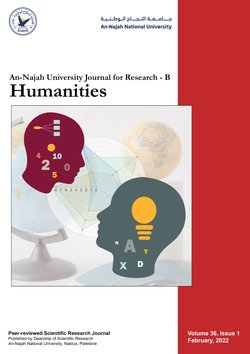The phenomenon of stigmatization: the case oh delinquency and repeated deeds in Tunisian society
Authors:
Article info
2020-09-05
2021-03-31
263 - 284
Keywords
- Perversion
- Crime
- Stigma
- Repetitive perversion
- The stigmatized
- To pervert
Abstract
The violations of regulatory rules, martial and religious laws, and social mores were among the reasons that led to the spread of various social phenomena. The latter contributed to social communication disorder and created immense abysses within societies such as immorality, violence and delinquency. Based on the explanatory theories of criminology or criminal sociology, the stigma of deviance was classified as a psychosocial disorder that the stigmatized suffers from, which had been confirmed by various researches starting from 1930s till 1950s. However, sociologists and experts in historical anthropology surpassed the concepts of linguistic terms, which were chiefly investigated by psychologists, to examine the features of stigmatization from a scientific perspective. Through the discussion of stigmatization, this research examines the key implications of stigma in relation not only to individuals but also to communities. It also investigates the reasons that lead some sectors of society to renounce and marginalize the stigmatized individual despite his efforts to go out the indictment division that crippled him and to reintegrate within his society.
Tej, R. (2023). The phenomenon of stigmatization: the case oh delinquency and repeated deeds in Tunisian society. An-Najah University Journal for Research - B (Humanities), 37(2), 263–284. https://doi.org/10.35552/0247-037-002-005
[1]R. Tej, “The phenomenon of stigmatization: the case oh delinquency and repeated deeds in Tunisian society,” An-Najah University Journal for Research - B (Humanities), vol. 37, no. 2, pp. 263–284, Feb. 2023, doi: 10.35552/0247-037-002-005.
Tej, Ramzi. “The Phenomenon of Stigmatization: The Case Oh Delinquency and Repeated Deeds in Tunisian Society.” An-Najah University Journal for Research - B (Humanities), vol. 37, no. 2, Feb. 2023, pp. 263–84. Crossref, https://doi.org/10.35552/0247-037-002-005.
1.Tej R. The phenomenon of stigmatization: the case oh delinquency and repeated deeds in Tunisian society. An-Najah University Journal for Research - B (Humanities) [Internet]. 2023 Feb;37(2):263–84. Available from: http://dx.doi.org/10.35552/0247-037-002-005
Tej, Ramzi. “The Phenomenon of Stigmatization: The Case Oh Delinquency and Repeated Deeds in Tunisian Society.” An-Najah University Journal for Research - B (Humanities) 37, no. 2 (February 2023): 263–84. https://doi.org/10.35552/0247-037-002-005.
ظاهرة الوصم: الانحراف والعود على الفعل في المجتمع التونسيّ نموذجا
المؤلفون:
معلومات المقال
2020-09-05
2021-03-31
263 - 284
الكلمات الإفتتاحية
- Perversion
- Crime
- Stigma
- Repetitive perversion
- The stigmatized
- To pervert
الملخص
عدّ الخروج عن الأطر التّنظيميّة، وقوانين الأحكام العرفيّة والشّرعيّة، والعوائد المجتمعيّة من أسباب تفشّي عدّة ظواهر اجتماعيّة ساهمت في خرق أسس التّواصل، وخلقت هوّة سحيقة في صلب المجتمعات الحاضنة لتلك الظّواهر، ولعلّ الانحلال الأخلاقي، وتنامي أشكال العنف والانحراف هما أبرز النّتائج المتمخّضة عنها. ويتنزّل الوصم الانحرافي اِستنادا إلى النّظريّة التّفسيريّة في علم الإجرام، أو علم الاجتماع الجنائيّ ضمن خانة الخلل النّفسيّ الاجتماعيّ الذي يعاني منه الموصوم بالانحراف، وهو ما أكّدته عديد الأبحاث التي خصّصت حيّزا كبيرا من اهتمامها لدراسة الظّاهرة منذ ثلاثينيّات القرن العشرين حتّى منتصف القرن ذاته، بيد أنّ علماء الاجتماع تجاوزوا مفاهيم المصطلحات الّلغويّة التي أشبعت بحثا مع المتخصّصين في علم النّفس للخوض في صفة الوصم من النّاحية العلميّة. وحاول هذا البحث من خلال التّطرق إلى ظاهرة الوصم، الخوض في أهمّ التّداعيّات المترتّبة عنها سواء في علاقة بالأفراد، أو في علاقة بالمجموعات، والأسباب التي دفعت بعض شرائح المجتمع إلى نبذ الموصوم وتهميشه رغم محاولاته الخروج من دائرة الاتّهام التي أحاطت به، والاندماج من جديد في المجتمع المنتمي إليه رغم المضايقات المسلّطة عليه.
Tej, R. (2023). The phenomenon of stigmatization: the case oh delinquency and repeated deeds in Tunisian society. An-Najah University Journal for Research - B (Humanities), 37(2), 263–284. https://doi.org/10.35552/0247-037-002-005
[1]R. Tej, “The phenomenon of stigmatization: the case oh delinquency and repeated deeds in Tunisian society,” An-Najah University Journal for Research - B (Humanities), vol. 37, no. 2, pp. 263–284, Feb. 2023, doi: 10.35552/0247-037-002-005.
Tej, Ramzi. “The Phenomenon of Stigmatization: The Case Oh Delinquency and Repeated Deeds in Tunisian Society.” An-Najah University Journal for Research - B (Humanities), vol. 37, no. 2, Feb. 2023, pp. 263–84. Crossref, https://doi.org/10.35552/0247-037-002-005.
1.Tej R. The phenomenon of stigmatization: the case oh delinquency and repeated deeds in Tunisian society. An-Najah University Journal for Research - B (Humanities) [Internet]. 2023 Feb;37(2):263–84. Available from: http://dx.doi.org/10.35552/0247-037-002-005
Tej, Ramzi. “The Phenomenon of Stigmatization: The Case Oh Delinquency and Repeated Deeds in Tunisian Society.” An-Najah University Journal for Research - B (Humanities) 37, no. 2 (February 2023): 263–84. https://doi.org/10.35552/0247-037-002-005.

Since 2019
Cite Score (Scopus): 0.5
Time to First Decision: 7 Days
Submission to Acceptance: 60 Days
Acceptance to Publication: 10 Days
Acceptance Rate: 20%
Call for Papers:
Special Issue on
Innovative Assessment in the Age of AI: Strategies for Quality
Why should you
Publish With Us?
An-Najah National University
Nablus, Palestine
Nablus, Palestine
- P.O. Box
- 7, 707
- Fax
- (970)(9)2345982
- Tel.
- (970)(9)2345560
- (970)(9)2345113/5/6/7-Ext. 2628
- [email protected]
- EIC
- Prof. Waleed Sweileh
